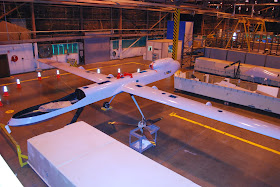The Trainer Development Flight (TDF) is a highly diversified group of civilians that work in different sections such as design, fabrication, assembly, quality/material/workload control and office support sections, as their core business is to provide top quality trainers in support of war fighting capability for the Air Force and DoD across the United States.
The TDF has their own facility in the Sheppard Air Force Base (Wichita Falls, Texas) where they design, develop, and manufacture trainers and training aids for the Air Force and all branches of the Department of Defense (DoD) as required. These aids are used in numerous training environments, including avionics, weapons and fuel systems, medical readiness, HVAC, and telecommunications systems.
The trainers and training aids may be either original products or replicas of existing ones, depending on the training need. Some devices are not required to be working units, so it usually isn’t cost-efficient to purchase the actual device. For most training applications, it’s more economical to train students on replicas, instead of the often extremely expensive equipment.
The TDF uses direct digital manufacturing to fabricate a wide majority of its training products. To do so, it employs four FDM additive fabrication machines in a centralized location with AFSO 21 (Lean) processes incorporated into the overall process. The Fused Deposition Modeler creates 3D solid models directly from 3D CAD files, or similar software, using PC-ABS plastic to build strong durable, fully functional prototypes within hours.
Before adding direct digital manufacturing to its processes, the TDF used conventional manufacturing methods to make its products. Conventional manufacturing typically requires longer lead times because there is often multiple steps, such as machining, lathe work, welding, sheet metal bending and cutting. A similar difficulty occurs when producing tooling to mold a part. “Because most of our projects are either one-of-a-kind or very low volume, conventional methods become very expensive,” says Mitchell Weatherly, Chief of the TDF. “Only about 10 percent of our work is for prototyping, and 90 percent is production.”
The machine reduces cost of materials through use of PC-ABS plastic and reduction of wasted alloys. Before settling on FDM, the TDF considered “a multitude” of the other additive processes, says Weatherly. “With FDM, the investment is up front, not ongoing,” he says. “The parts are durable, and they have the high level of detail we require. In addition, the process is environmentally safe and 100% ‘green’ with zero waste.”
The TDF is responsible for designing and manufacturing an exact replica of any required UAV (MQ-9 Reaper in this case) for training repair technicians. It has built a variety of internal and external components using its FDM machines. Once the final product is complete the employees at the metal shop will cut the metal to the exact tolerance and add the metal for realism so that Airmen will know what the real product not only looks like, but can feel the actual physical weight of it.
The components included most of the body components as well as several cowlings, propellers, and antennas. They also purchased a number of real UAV components from the OEM.“Major advantages to the FDM system include its speed over other processes or alternative build methods, the versatility of FDM versus injection molding, and the ability to run multiple parts simultaneously through the system,” says Weatherly. Benefits include ease of maintenance, as well as the availability to use multiple materials for a variety of purposes.
“Additional capabilities include the ability to design based on function needs instead of manufacturing constraints, and the ability to implement design changes immediately and at minimal costs. The versatility to manufacture any item coupled with zero hazardous waste is one of the greatest advantages to the Air Force,” says Weatherly. ”The FDM-based machines have been used for a number of trainer projects which have tight budgets. We have also utilized the FDM process for research and development for our airmen and soldiers to be able to train like we fight."
“For our first FDM machine purchase, we projected ROI in 4 years, but it took only 18 months,” Weatherly says. “For our second FDM machine purchase we saw ROI in only 9 months. You will never get away from conventional methods and highly skilled technicians, but you can give them the proper tools and new technology that can make their job easier and competitive. I believe FDM is one of the technologically advanced premier manufacturing methods available. Since 2004, when we purchased our first of four machines, the FDM process has saved the government over $3.8 million to date with an expected 10-to-15-year savings of over $15 million. “








